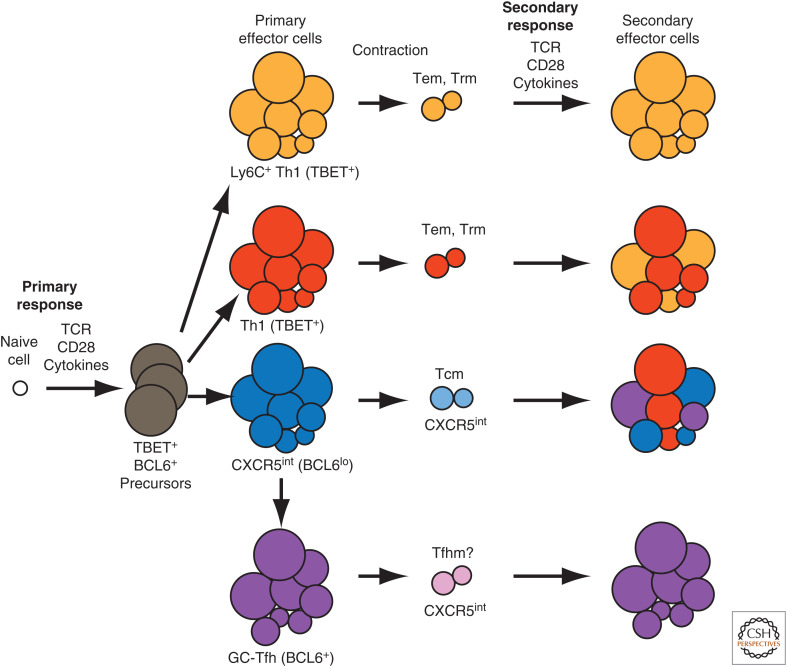Figure 1.
Model of CD4+ memory T-cell formation. The diagram shows the primary response of a single naive CD4+ T cell exposed to the relevant peptide:MHCII ligand on a CD28 ligand-expressing antigen-presenting cell in an inflammatory cytokine-rich environment produced by an acute infection that is cleared. The cell proliferates to produce TBET+ BCL6+ precursors that differentiate into Ly6C+ Th1, Ly6C– Th1, germinal center (GC)-Tfh, or CXCR5int early effector cells. The cells in each subpopulation have a range of cell sizes and metabolic activities driven by differences in mTOR and c-Myc production. The largest cells, which suffer the most mitochondrial damage during the expansion phase, then preferentially die in each population during the contraction phase. Ly6C+ and Ly6C– Th1 effector cells generate Ly6C+ and Ly6C– Th1 effector (Tem) and resident memory (Trm) cells, CXCR5int effector cells generate CXCR5int memory cells, which may express CCR7 and thus resemble central memory (Tcm) cells, and GC-Tfh effector cells generate Tfh memory (Tfhm) cells. During secondary responses, Ly6C+ Th1 memory cells produce only Ly6C+ effector cells, less differentiated Ly6C– Th1 memory cells generate a mixture of Ly6C+ and Ly6C– Th1 effector cells, CXCR5int Tcm-like memory cells produce Th1, GC-Tfh, and CXCR5int effector cells, and Tfhm cells produce GC-Tfh effector cells. (TCR) T-cell receptor.

